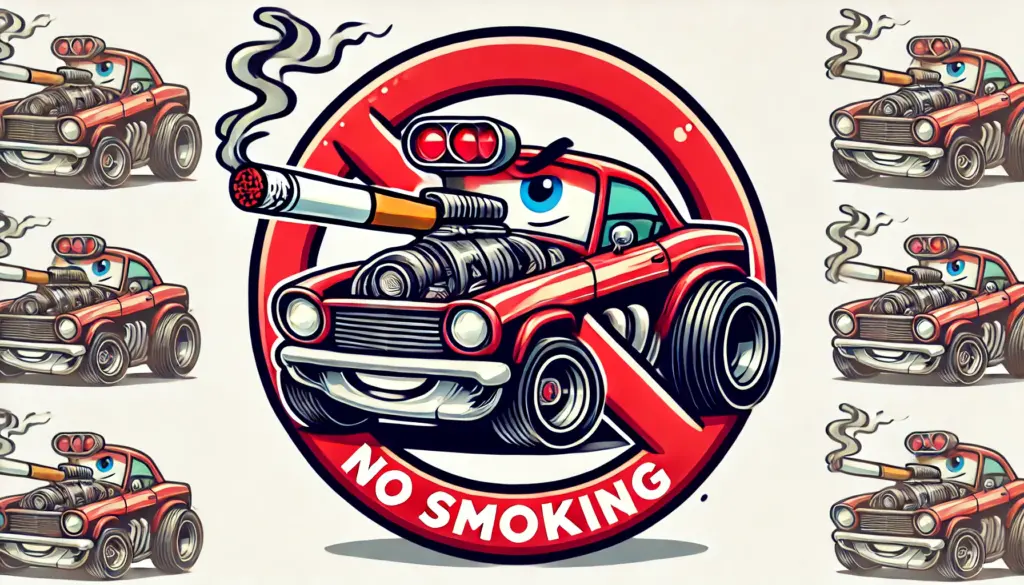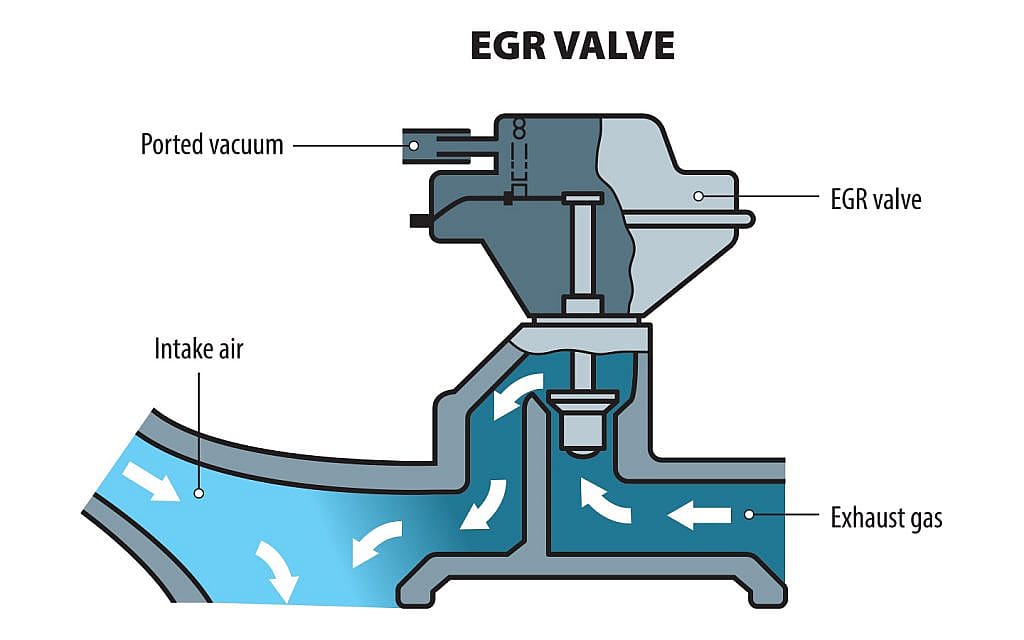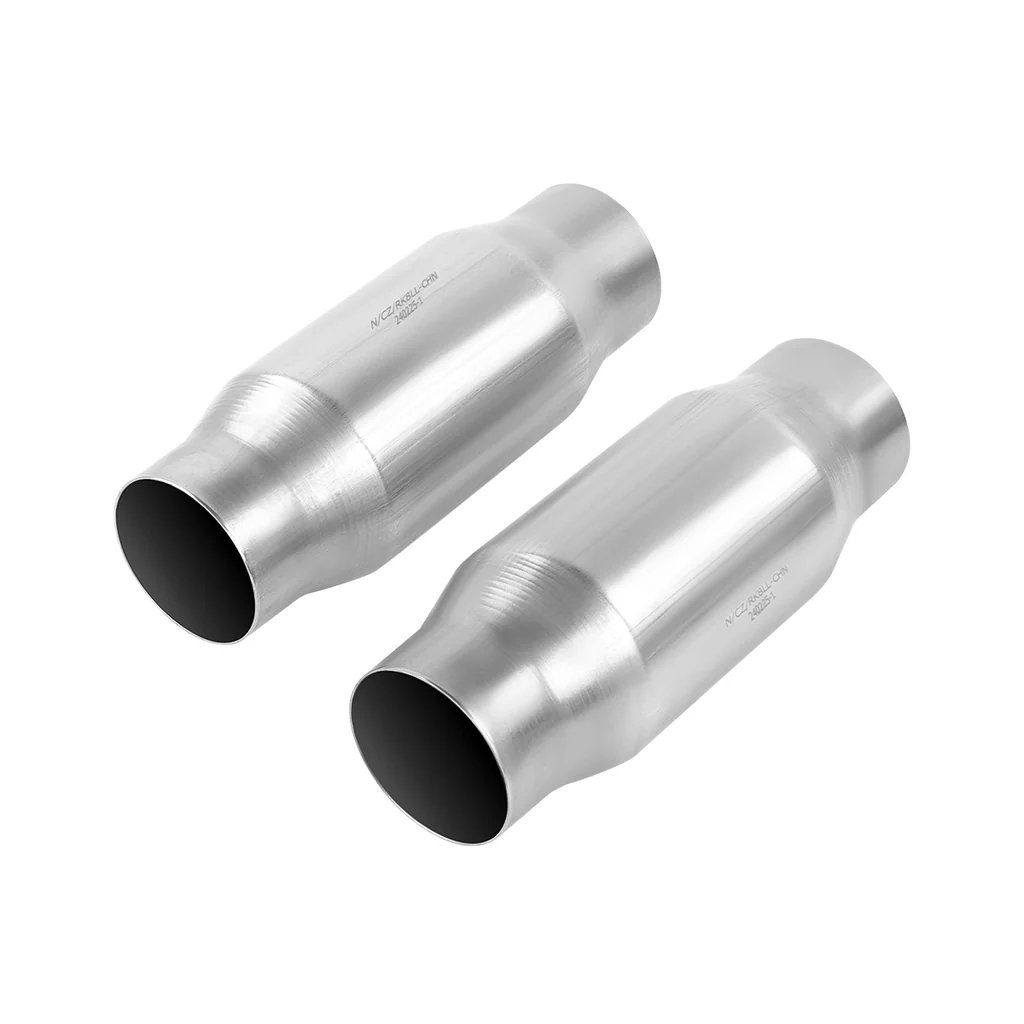Vehicle Emissions: What You Need to Know About Federal and State Regulations, Performance, and Compliance

If you’re working on a pre-2000 vehicle you’ve probably found yourself staring down that tangled mess of emissions control systems and wondering if you really need all that smog gear. After all, it’s frustrating to think that the equipment designed to reduce pollution is also choking off your engine’s power. Wouldn’t an EGR system delete just be simpler than all that junk?
But before you start pulling parts off, let’s take a look at what’s really going on under the hood when it comes to EGR systems, catalytic converters, smog pumps, and EPA regulations. In this article, we’re going to get real about how emissions controls affect performance, what the EPA is trying to accomplish, and what happens if you decide to just say “forget it” and delete that stuff. It’s a complicated subject. While I totally understand why most old-school builders hate dealing with emissions systems, it’s important to know the facts before you decide to follow the rules or not.
Shop Talk: Why Builders Tend to Disregard the EPA
Let’s be honest—if you spend enough time in a garage, especially with guys who grew up building engines before emissions were a big deal, you’ve probably heard a lot of folks talk about yanking their EGR system or scrapping the smog pump. And honestly, I get it. For most of us, our first thought is performance: more power, better throttle response, cleaner engine bays. The old-school way of thinking is, “The fewer parts on the engine, the better.” Plus, EGR systems have a reputation for robbing horsepower. Smog pumps just seem like dead weight. Catalytic converters are thief magnets and expensive to replace. What’s the point of this crap anyway?
For a lot of engine builders, especially those working on classic cars and trucks, EPA regulations feel like a bunch of red tape that has no place in the garage. Back in the day, nobody cared about smog testing. You pulled parts to make the car go faster—that’s just how it was.
Even today, it can feel like emissions controls are overbearing. You’ve got high-flow heads, a big cam, and a killer exhaust system, but that old EGR setup is still sitting there It’s just dumping exhaust back into your intake and killing your power. What’s worse is that if you’re like me, living in a state with no emissions testing, you might be thinking, “Why bother?”
And I get it—I really do. I’m not here to fault anyone for pulling emissions systems. But as someone who runs a YouTube channel and writes for an audience of builders, restorers, and truck enthusiasts, I have a responsibility to talk about both sides. Whether you choose to keep the equipment or not, it’s important to understand what it’s doing and the legal risks you take by removing it.
How the EGR System Works: The Science Behind Reducing NOx Emissions
To understand why the EGR (Exhaust Gas Recirculation) system exists, we first need to get into the chemistry of combustion and what happens inside your engine. The basic idea is this: combustion requires oxygen and fuel, and when the air/fuel mixture burns, it creates several byproducts. This is mainly carbon dioxide (CO2), water vapor (H2O), and nitrogen oxides (NOx). While CO2 and water vapor are relatively harmless (from an air quality perspective), NOx emissions are highly problematic.
Why is NOx Dangerous?
Nitrogen oxides (NOx) are a family of poisonous gases that contribute to the formation of smog and acid rain. That means they’re a serious public health concern. NOx is created when nitrogen and oxygen in the air combine at high combustion temperatures. In an engine, combustion temperatures can easily exceed 2,500°F, and this is where NOx is formed.
Once NOx is released into the atmosphere, it reacts with other chemicals under sunlight to produce ozone (O3), which is the main component of smog. Not only does ozone contribute to respiratory problems like asthma, but NOx also reacts with water vapor in the air to form nitric acid. Nitric acid forms a key component of acid rain, which can damage ecosystems and infrastructure.
The Role of the EGR System
So, how does the EGR system help? By recirculating a portion of the exhaust gases back into the engine’s intake. The EGR system effectively lowers the combustion temperature. Here’s why this works:
- Lowering Oxygen Concentration: When exhaust gases are reintroduced into the combustion chamber, they take up space that would otherwise be filled by fresh oxygen. Since exhaust gases are largely composed of inert gases like CO2, they don’t contribute to combustion. With less oxygen available, the combustion process is less intense, meaning lower temperatures overall.
- Reducing NOx Formation: Since NOx is formed primarily at high temperatures, lowering the combustion temperature directly reduces the formation of NOx. The EGR system does this by diluting the incoming air/fuel mixture with exhaust gas, effectively reducing peak combustion temperatures to levels where NOx formation is minimized.
This system is particularly effective in part-throttle conditions—like highway cruising—where engines naturally run hotter and are more prone to generating NOx. But, as you might guess, this comes with some downsides, especially for performance.
How EGR Affects Engine Performance
While the EGR system helps with emissions, it also has a negative impact on performance:
- Diluted Air/Fuel Mixture: The reintroduction of exhaust gases into the intake stream dilutes the fresh air/fuel mixture, reducing the amount of oxygen available for combustion. This leads to less efficient combustion and, consequently, less power.
- Reduced Throttle Response: Because the engine is burning a less potent mixture, you’ll often notice reduced throttle response, especially when accelerating from low RPMs. This is one of the main reasons why performance builders tend to dislike EGR systems—they slow down engine response when you’re trying to squeeze out every bit of horsepower.
- Increased Carbon Deposits: Over time, recirculating exhaust gases back into the intake can lead to a buildup of carbon deposits on the intake valves and inside the combustion chamber. These deposits can lead to further performance issues, including misfires, rough idle, and poor fuel economy.
The EGR Valve: The Heart of the System

At the core of the EGR system is the EGR valve, which regulates how much exhaust gas gets recirculated back into the intake. Early EGR valves were vacuum-operated and fairly crude—they’d open or close based on engine load and throttle position, but they weren’t particularly precise. This is part of the reason why older EGR systems are notorious for causing performance problems.
Modern EGR systems, however, are much more advanced. Today’s electronic EGR valves are controlled by the vehicle’s ECU (Engine Control Unit), which allows for much finer control over when and how much exhaust gas is recirculated. As a result, modern vehicles can reduce NOx emissions without sacrificing nearly as much performance as older systems.
The Smog Pump: How It Works and Why Builders Remove It
The smog pump, also known as the air injection pump, was another emissions control device found on a lot of vehicles from the ‘70s through the ‘90s. It was designed to inject fresh air into the exhaust stream, helping to burn off unburnt hydrocarbons before they were expelled into the atmosphere. This process reduces harmful emissions, particularly during the first few minutes after the engine starts when the engine is cold and running rich.
How the Smog Pump Works
Here’s the basic idea: the smog pump pulls in fresh air from the atmosphere and injects it into the exhaust manifold or catalytic converter. By doing this, the extra oxygen allows unburnt fuel in the exhaust to finish burning, which helps reduce the amount of hydrocarbons (HC) and carbon monoxide (CO) released into the air.
While this sounds good for emissions, most builders view the smog pump as a performance killer. Why? Because it’s essentially a belt-driven accessory that creates drag on the engine, robbing it of a bit of horsepower. On top of that, the extra plumbing and lines make the engine bay look cluttered, and since many states don’t test for smog pumps, a lot of folks yank them during engine rebuilds.
Why Builders Remove It
For performance-focused builders, the smog pump is often the first thing to go when they’re chasing horsepower. It’s a classic example of trading off a little bit of environmental responsibility for engine efficiency. The pump itself doesn’t do anything to help the engine’s performance, and pulling it can free up some power—albeit not a huge amount. But hey, every little bit counts when you’re squeezing out horsepower!
Just keep in mind that removing the smog pump is technically illegal under federal law, and in states like California, you’ll fail emissions testing if the smog pump is missing. It’s another case of weighing your performance goals against compliance with the law.
Catalytic Converters: What They Do and Why They Get Stolen

The catalytic converter is one of the most important pieces of emissions equipment on your vehicle. Its job is to reduce the amount of harmful gases that are released into the air by converting them into less harmful substances before they leave the exhaust system. Inside the cat, a combination of platinum, palladium, and rhodium (more on these in a minute) act as a catalyst, speeding up the chemical reactions that turn toxic gases into carbon dioxide (CO2) and water vapor (H2O).
How the Catalytic Converter Works
As exhaust gases flow through the catalytic converter, they pass over a honeycomb structure coated in the precious metals I mentioned earlier. These metals help break down three main pollutants:
- Carbon monoxide (CO) into carbon dioxide (CO2).
- Nitrogen oxides (NOx) into nitrogen and oxygen.
- Unburnt hydrocarbons (HC) into water vapor and carbon dioxide.
Older catalytic converters were pretty restrictive, which is why they got a bad rep for hurting performance. They created backpressure in the exhaust system, which made it harder for the engine to breathe. But modern high-flow catalytic converters are much better at reducing emissions while allowing for freer exhaust flow, which means you can stay compliant without losing a ton of power.
Why Catalytic Converters Get Stolen
Now, let’s talk about why catalytic converters have become a prime target for thieves. It all comes down to the precious metals inside—platinum, palladium, and rhodium. These metals are rare and valuable, and the prices for them have skyrocketed in recent years. A thief can steal a cat in a matter of minutes, and they can sell it to scrap dealers for a pretty penny. Depending on the converter, they might get anywhere from $50 to over $1,000, which is why cat theft has become so common.
For most folks, it’s a huge hassle and expense to replace a stolen catalytic converter. On top of that, driving without a cat is illegal, so you’ll need to replace it to stay on the right side of the law. If you want to protect your cat from theft, consider investing in a catalytic converter shield or lock. These devices make it harder for thieves to get at the converter, which could save you a big headache down the road.
(Source: Why catalytic converters are being stolen)
EPA Regulations: What You Need to Know
Now that we’ve covered how these systems work, let’s get into the legal side. The EPA sets nationwide standards for vehicle emissions under the Clean Air Act, and these regulations apply to every vehicle on the road—regardless of whether your state enforces emissions testing. Here are the main things you need to know about EPA regulations, enforcement, and consequences.
Tampering with Emissions Equipment is Federally Illegal
Under the Clean Air Act (specifically Section 203), it’s illegal to tamper with or remove any emissions control device from a vehicle. This includes the EGR system, catalytic converter, and smog pump. Even if your state doesn’t test for emissions, federal law still applies. That means if the EPA finds out you’ve removed or tampered with these systems, you could face fines—whether you’re a consumer, shop, or seller.
(Source: EPA Enforcement: Tampering with Vehicle Emissions Controls)
Consequences for Sellers, Shops, and DIY Builders
The EPA has stepped up enforcement in recent years, targeting sellers of non-compliant products, shops performing illegal modifications, and even individuals doing DIY deletes. Here’s what can happen if you’re caught:
- Sellers of Non-Compliant Products: Companies that manufacture or sell parts designed to bypass or disable emissions controls can face massive fines. In some cases, the EPA has issued fines in the millions to companies involved in selling defeat devices or other emissions-deleting products.
- Shops Performing Deletes: Auto shops that offer services to remove or bypass emissions controls can also face severe penalties. Fines for tampering violations can be as high as $4,819 per violation, and the EPA has targeted shops across the country for performing emissions deletes.
- Consumers Who DIY Deletes: While the EPA tends to focus more on businesses, consumers aren’t off the hook. If you’re caught driving a vehicle that has had its emissions systems tampered with, you could face fines or be forced to bring the vehicle back into compliance. If you plan to sell the vehicle down the road, it could cause major headaches, especially in states with strict emissions laws like California.
(Source: EPA Case Resolutions – Examples of Enforcement)
In my research, I found plenty of cases where the EPA has aggressively gone after shops, professional builders, or companies that produce devices that defeat or remove these systems. That said, I could not find a single case of the EPA or law enforcement targeting an individual for modifying their own vehicle (beyond hassle at the inspection station or anecdotal forum posts). That doesn’t mean they haven’t… but I couldn’t find it. Take that for what it’s worth.
My Own Build: What I’m Doing and Why
So, I’m in the middle of building a 408ci stroker for my truck, and trust me, I’ve been asking the same questions that a lot of you are probably thinking about: What emissions gear do I keep? What can I tweak for better performance? And how do I stay legal? Living in New Mexico, where they don’t require emissions testing for vehicles older than 1990 (at least in my area), I’ve got a bit more flexibility, but that doesn’t mean I can just ignore the federal side of things.
For this build, I’m running high-flow catalytic converters. Why? Because they let me keep the truck’s emissions cleaner while still getting the exhaust flow I need for performance. These modern cats are so much better than the old ones—less restrictive, but still doing their job at cutting down on pollutants. That’s just being a responsible steward of the planet at the very least, and I’m trying my best to stay in compliance as much as I can with a 1985 vehicle, within reason. You can probably read between the lines there.
That said, I’ve decided not to put the EGR system or smog pump back on. Let me lay out why:
- They’re not required under New Mexico state law for my truck.
- Honestly, those parts tend to be restrictive when it comes to making real horsepower.
- The old-school clean look is important to me.
- I’m not a mechanic, and the fewer parts I need to deal with, the better.
- I feel like emissions control in 1985 wasn’t the best, and high flow cats probably do better on their own.
- *This isn’t backed by hard science, just me talking plainly here.
Also, I won’t be selling this truck any time soon.
But, and this is important—I’m basing this choice on my specific situation. If you’re working in a state with tougher emissions laws, or if you’re planning to sell your truck later, you’ll want to think carefully about what equipment you remove. And remember—federal law still applies, even if your state isn’t testing your vehicle.
So yeah, this is what works for me, but make sure you’re checking the laws where you live before making any big decisions.
Conclusion: Keep It Smart and Know the Risks
At the end of the day, dealing with emissions gear is one of those things most of us would rather not mess with. I get it—pulling the EGR, ditching the smog pump, and keeping a clean engine bay can help squeeze out some extra horsepower. But before you go ripping everything out, it’s worth taking a step back and thinking about the bigger picture.
Sure, maybe your state doesn’t test for emissions, or maybe you’ve never had an issue with your truck. But federal laws are still hanging over all of us, and the EPA isn’t messing around when it comes to tampering with emissions systems. Fines can pile up fast if they decide to crack down, and you don’t want to be the guy that gets caught out.
The good news is, there are modern solutions out there—like high-flow cats and better-engineered EGR systems—that can give you a balance between performance and keeping things clean. It’s all about finding what works for your build and where you live. You don’t have to choose between being compliant and getting power out of your engine.
So yeah, if you’re thinking about pulling emissions gear, just make sure you understand what you’re getting into. At the end of the day, it’s all about making informed decisions and knowing the risks. If you want to go fast and stay legal, there’s always a way—you just gotta be smart about it.

If you want more specific information on Bullnose Ford Trucks, check out my YouTube Channel!
For more information on Bullnose Fords, you can check out the BullnoseFord SubReddit or Gary’s Garagemahal. Both are excellent resources.